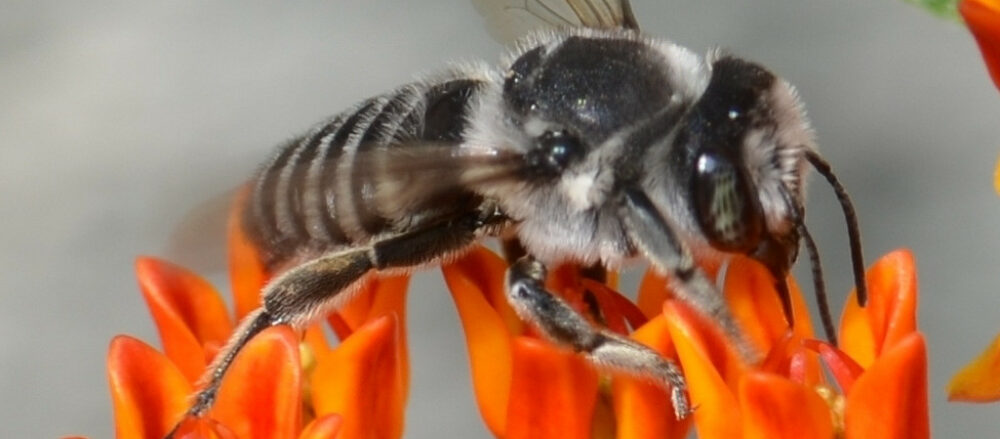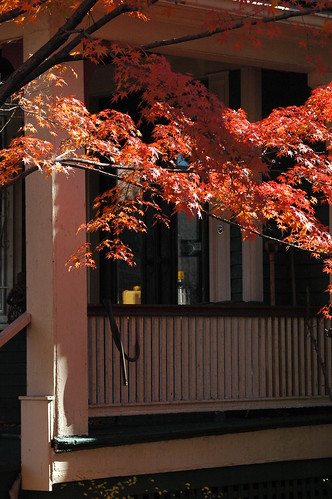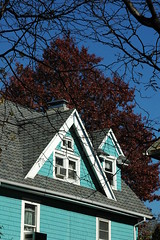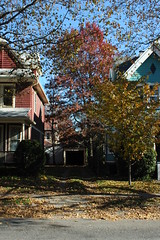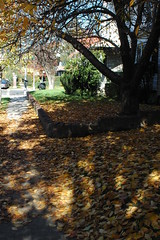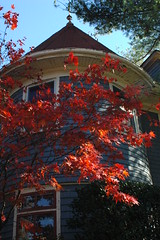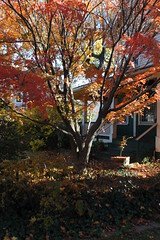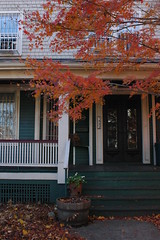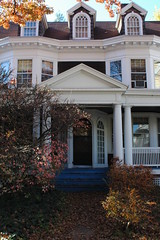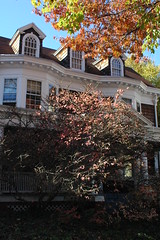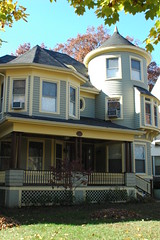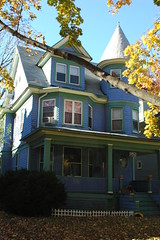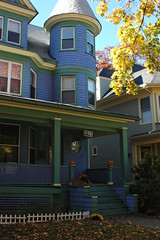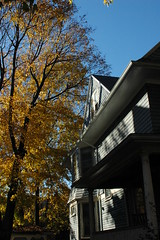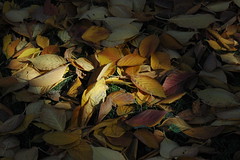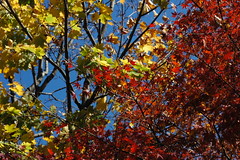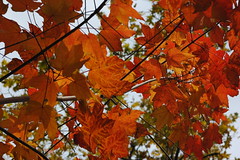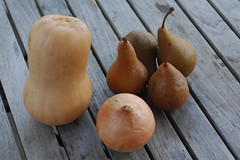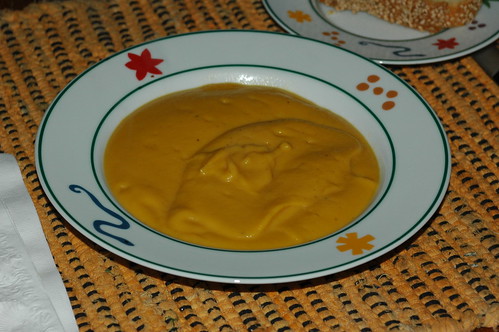
The finished product.
This afternoon I made squash and pear soup for three. There are several things I like about this recipe. You make it a couple of hours before dinner, or even the day before, then heat it just before serving. It can be made for small groups, as I did today, or large parties of 20 or more. It’s always a crowd pleaser. The combination of flavors and textures – savory, dense and smooth from the squash, sweet, light and slightly grainy from the pears – is surprising and pleasing. It’s a forgiving recipe: the exact proportions are not as important as the basic ingredients and their preparation. The three main ingredients – winter squash, pears, and onions – are all available locally at this time of year from farmer’s markets such as NYC’s Greenmarkets. It can be made completely vegan, without even any dairy, if you wish. And all the skins from the squash, pears and onions can go in the compost!
The original recipe came from Anna Thomas‘ The New Vegetarian Epicure. I’ve simplified the recipe over the years; the original recipe called for both squash and yams, and three different liquids: vegetable broth, milk and wine. I’ve made it many times before, so today I didn’t bother following a recipe. Figure roughly 2 parts (by gross purchase weight) squash, 1 part or more of pear, and 1 part or less of onion. Use proportionally more pear for a sweeter soup, more onion for a savory soup. As you can see from the photo above, it gives you a thick, creamy soup, so it needs some added liquid. You can also influence and shift the taste and texture by your choice of liquid. Today, I used just enough milk to blend things easily, but you could use soup stock or fruit juice instead.
Equipment:
- Covered baking pan or dish
- Sauce or saute pan
- Blender or food processor
- Vegetable peeler
- Chef’s knife for slicing and chopping
Main Ingredients:
- Hard Winter Squash. Butternut is easiest to prepare. I’ve also used Acorn squash, it’s just more time-consuming to remove the rind.
- Pears, eg: Bosc. They don’t have to be completely ripe. Baking apples could also be used instead of pears.
- White onions. Vidalia onions are really nice in this soup, but are not necessary for success.
- Liquid for thinning the soup. Use chicken or vegetable stock for a more savory soup, apple cider for a sweeter soup, or milk.
Seasonings:
- Fine-ground spices, especially allspice, cloves, cinnamon, nutmeg, or ginger. I’ve over-done this in the past; it doesn’t take much, especially if the spices are freshly ground. You just want to bring out the other flavors, not overpower them. Today I used a commercial mulling spice blend which has all of these plus orange rind.
- Fresh-ground pepper.
- Vanilla extract (optional). I used just a little of this today, and it worked really well. It just mellowed and smoothed out the spices, but was not noticeable on its own.
Other:
- Olive oil, for sauteing onions and pears
Preparing the squash
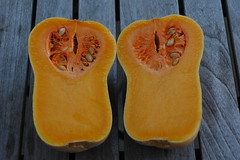
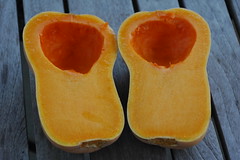
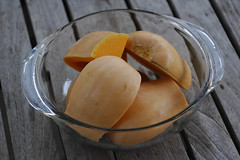
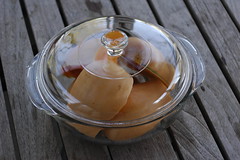
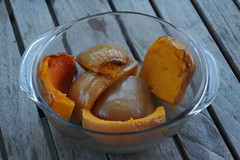
- Wash the outside of the squash thoroughly.
- Halve the squash.
- Remove all seeds and as much of the stringy pith surrounding them as you can. It doesn’t have to be perfect, since it’s all going to be pureed later anyway.
- Place the squash halves face down in the baking dish. If the dish is too small, cut the squash into the largest possible pieces which will fit in the dish. The larger the pieces, the easier it will be to peel them later.
- Cover the dish and bake until all the squash is completely soft and the skin pulls away easily. I baked mine today in a microwave oven at full power for a total of 30 minutes.
- Remove the dish, uncover it, and allow the squash to cool completely to room temperature. This will take at least one hour, possible two.
- Peel the squash, separating the flesh from the rind. Add the flesh directly to the blender or food processor. You can also add any liquid which collected in the baking dish.
Preparing the onions and pears
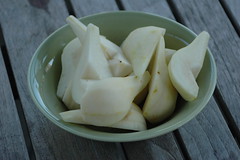
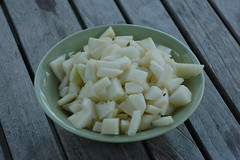
You can do this while the squash is baking.
- Peel, slice and dice the onions to a coarse chop.
- Begin sauteing the onions in some olive oil over medium heat. You want to get the onions to translucence, but not burn them.
- Peel the pears.
- Slice the pears (I find it convenient to slice them into quarters). Remove the seeds, core and any “woody” bits at the blossom or stem ends (see photo).
- Cut the pear segments to a coarse chop (see photo).
- Add the pear pieces to the onions.
- Continue sauteing the onions and pears until the onions are translucent and the pears pieces are soft enough to mash with a wooden spoon.
- If the onions or pears start to brown, turn down the heat, add a little bit of liquid such as water or fruit juice, and cover the pan. Continue baking them on the stove this way until the pears are soft.
- When the onions are translucent and the pears are soft, add them directly to the blender or food processor.
Finishing the soup
- If you haven’t already, add the peeled squash, squash juices, onions and pears to the blender or food processor.
- Beginning on the slowest speed, begin chopping and blending these ingredients.
- Add just enough liquid to allow things to chop and blend easily.
- Gradually increase the speed, adding liquid as needed, until you can puree all the ingredients smoothly together.
- Add the seasonings to taste. Add less than you think you need, blend thoroughly after each addition, and taste.
- Once the seasonings are adjusted, add more liquid if you want a thinner soup. Again, blend thoroughly after each addition until you get the texture you want, and taste after each blending. As you can see from the top photo, I kept my soup pretty thick today.
- Refrigerate the soup if it’s not going to be served immediately.
- Heat the soup just before serving. Serve plain, or garnish with some extra chopped pear, or maybe a nasturtium.
That’s it! Enjoy, and let me know how it turns out.
